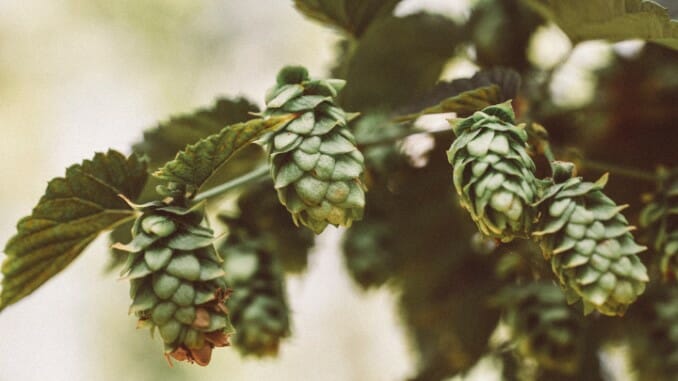The Brewers Association 2022 Style Guidelines Finally Acknowledge IPA’s Biggest Modern Problem: Hop Burn
Photo via Unsplash, Markus Spiske, Evan Dvorkin
Today, the Colorado-based Brewers Association, the trade group for the American independent beer industry, released its yearly update to the living document that is its beer style guidelines. On any given year, the headlines generated by the style guidelines update typically revolve around the introduction of new styles, or tweaks to the descriptions of iconic beer styles—changes that are not “definitive” by any means, but important in the sense that these guidelines serve as judging criteria for each year’s Great American Beer Festival, the country’s largest annual beer competition. The 2022 Style Guidelines are actually notable, meanwhile, for the fact that they don’t introduce any new styles this time around—but a subtle tweak to the entries for several varieties of hazy India pale ale are still quite significant. For the first time, these definitions now acknowledge the single biggest problem that the hazy IPA style has contended with in recent years: hop burn.
What is “hop burn”? Well, it’s something I’ve written about at length before, and an issue that has particularly been bothering me since I wrote this piece way back in 2019. At that time, the mere existence of “hop burn,” and the phrase itself, were just coming to be widely acknowledged, though it’s something that has plagued many IPAs ever since the hazy/juicy revolution began. Today, the driving forces behind hop burn are better understood: It’s generally believed that this intensely astringent, drying, corrosive sensation is caused by chemical compounds called polyphenols, which are unsurprisingly present in hops. Hop burn is believed to be caused through excessive contact time between the vegetative matter of hops and the beer—something that wasn’t a problem during earlier eras of traditional IPA brewing, but became very common in the hazy IPA era due to the normalization of massive, long dry hopping periods. This is why “hop burn” was unknown in earlier styles of IPA, which may have employed dry hopping techniques, but in much more restrained ways, while deriving most of their hop flavors from hops added during the boil.
In short, as the beer sits in contact for long periods with extremely large volumes of mushy hop matter, in a fermenter or brite tank, it slowly leeches polyphenols into the final product. These tend to result in an intensely astringent, unpleasant and puckering mouthfeel, which can easily mar the “juicy” profile that is being sought after. The other style hallmarks of hazy IPA, such as the thicker, more creamy texture, also contribute to the hop burn sensation, as the “more viscous grist” of hazy IPAs also plays a role in keeping astringent polyphenols suspended in the beer, according to beer writer Scott Janish, author of The New IPA Book.
 Hazy IPA manages to often be one of the most visually attractive, but texturally flawed beer styles. Or in other words, perfect for Instagram.
Hazy IPA manages to often be one of the most visually attractive, but texturally flawed beer styles. Or in other words, perfect for Instagram.
Thankfully, brewers focusing on hoppy beer who are aware of the unpleasant aspects of hop burn are now able to take steps to avoid it, which can include the use of higher alpha acid (AA) varietals, which typically contain fewer polyphenols. It’s even been suggested by Janish that including some degree of hop bitterness can decrease the astringency of hop burn, which is music to our ears for a style that has been defined by an intentional lack of any semblance of balance. A more balanced, less purely sweet and fruity hazy IPA might just be the platonic ideal after all.
-

-

-

-

-

-

-

-

-

-

-

-

-

-

-

-

-

-

-

-

-

-

-

-

-

-

-

-

-

-

-

-

-

-

-

-

-

-

-

-








































